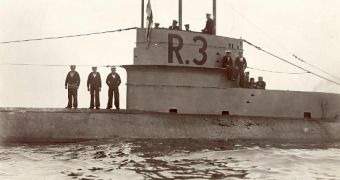Underwater archaeologists have recently discovered the remains of 44 submarines that sank during World War I.
Of the 44 vessels, 41 are German and 3 are British. Their remains were found on the sea floor close to England's southern and eastern coastline, at a depth of just 15 meters (about 50 feet).
Given their impressive numbers, researchers say that the area where they are resting looks like a vast ocean graveyard.
Daily Mail explains that, during WWI, many German Imperial Navy submarines were lost in battle.
More precisely, of the 380 U-boats that the German Navy made use of during WWI, about half never made it back to shore.
Although records from those days indicate just how many of them were destroyed, researchers are unable to say how and where some of the submarines were brought down by enemy forces.
Therefore, the fate of the crew aboard them is pretty much shrouded in mystery.
Archaeologists hope that, now that they have discovered these vessels, they will be able to solve at least part of this puzzle.
“We owe it to these people to tell their story,” said underwater archaeologist Mark Dunkley of English Heritage, i.e. a public body whose mission is to secure Britain's cultural heritage.
Researchers say that they plan to closely explore these long-lost vessels, and perhaps shed some light on their crew's demise.
Mark Dunkley explains that, contrary to what some people might think, exploring these vessels' remains will not be a very easy thing to do.
“We divers only approach the boats with great caution. Venturing inside would definitely be extremely dangerous,” he reportedly told the press.
By the looks of it, the underwater archaeologists plan to use robots to cut through the submarines' hull and catch a glimpse of their insides.
“Perhaps we'll find a cup or a sign with a name on it,” Mark Dunkley hopes.
Though less efficient than the submarines used during WWII, the ones sent to fight enemy forces during WWI were quite “gifted” at causing noteworthy damage. Still, they sometimes misfired, thus endangering the crew's life.

 14 DAY TRIAL //
14 DAY TRIAL //